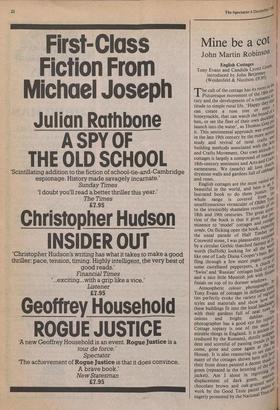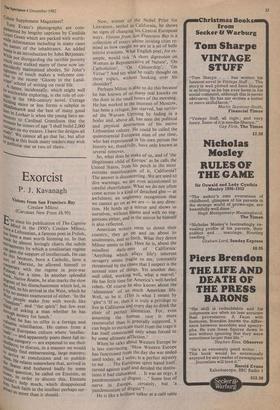Mine be a cot
John Martin Robinson
English Cottages Tony Evans and Candida Lycett Green, introduced by John Betjeinan (Weidenfeld & Nicolson
Tpheitu ecurlteosciufte mhemcoovtteageenhtaosfittsbreool t8solincetilne. ttuitryudeantdo sthime pdleevreulorapimliefnet aaprpoymtahtlety,i030:1 can create a rose tree or ere'" fa honeysuckle, that can watch the brood °' 5 hen, or see the fleet of their own duckhlt launch into the water', as Thomas GraY,P,id it. This sentimental approach was 0ve;r7u; in the late 19th century by the more se"' study and revival of rural crafts ;11°5 building methods associated with the 10 and Crafts Movement. Our own attituactic cottages is largely a compound of rontallit, 18th-century sentiment and Arts and Oa earnestness. We (nearly) all love thatce: and and gardens full of cal/b d se ag English cottages are the most varied arld- ibuesaturatitfeudl ibnoothke two do them tabnedm h;:ticise.arivittiee whole range is covered fronte unselfconscious vernacular of Olden ?ibe to the irresistibly shameless revivals 18th and 19th centuries. The great att tion of the book is that it gives due Pages minence to 'model' cottages and oil ing ornes. On flicking open the book, exPectod the usual parade of Half Timber .sed Cotswold stone, I was pleasurably surPritv by a circular Gothic thatched fantasY ro worth (Suffolk) looking for all thc Wiz°111' like one of Lady Diana Cooper's hats. flied fling through a few more pages reve11 of some castellated pepperpots, a clut°.4,5• a` Suwdis' asoain ' nice little liRt tulessmian' oocroistbt cottages b vv u ofifrt;e finials on top of its dormer wilicis.hI Atmospheric colourphotograd phs tor Tony Evans of cottages in different e.„rol ties perfectly evoke the variety of reweii styles and materials and show these buildings fit into the local lan' of with their gardens full of neat rowsibe onions and bright dahlias. .0 photographer has a good eye for t°P,1 Cottage topiary is one of the nWs., Orr mirable things in England. It is ancie,°` troduced by the Romans), dottily inu,e.,1105 dent and scornful of passing trends 0'0s come, gone and come again at tht so House). It is also reassuring to see many of the cottages shown here st,iilde of their front doors painted a decent su° green (repeated in the lettering of the ttie jacket). Am I alone in regrettingr000. displacement of dark green, °It 00J* chocolate brown and oak-grained work by the Good Taste pastel Pain' and eagerly promoted by the National Trust
Colour Supplement Magazines?
„jonl, Evans's photographs are co m- rernented by lengthy captions by Candida LYeett Green which are packed with worth- tie information including in many cases 'I:Le names of the inhabitants. An added \‘'n,nus is an introduction by John Betjeman. ile not disregarding the terrible poverty ulch once stalked many of these now im- Neul I; h ateIY maintained abodes, Sir John's tg tness of touch makes a welcome con- s,,rast to the recent 'Gloom in the Land- 'ape school of writing on rural life. b A theme, incidentally, which might well tae worthwhile exploring, is the role of cot- b g.eis in the 19th-century novel. Cottage Alii,hcling more or less forms a subplot in iddietnarch and the best of many good nlies in Lothair is when the young hero an- 2linces to Cardinal Grandison that the :e'''nlent he comes of age 'I shall build 2,000 tea"jt,tages on my estates. I have the designs all 10,,'• We cannot all go that far, but after ijmng at this book many readers may wish
gothicise one or two of theirs.











































 Previous page
Previous page